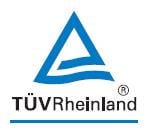 Occupational health and safety should be an important part of every company. With a certified management system in accordance with ISO 45001, a company management proves that it has taken comprehensive measures to protect its employees. "This is not just a matter of minimizing the risk of accidents. Such a management system also serves to consider medium-term risks such as back pain caused by poor ergonomics in the workplace or organizational deficiencies and the resulting psychological stress," says Anja Oels, an expert in occupational health and safety at TÜV Rheinland.
Occupational health and safety should be an important part of every company. With a certified management system in accordance with ISO 45001, a company management proves that it has taken comprehensive measures to protect its employees. "This is not just a matter of minimizing the risk of accidents. Such a management system also serves to consider medium-term risks such as back pain caused by poor ergonomics in the workplace or organizational deficiencies and the resulting psychological stress," says Anja Oels, an expert in occupational health and safety at TÜV Rheinland.
Certification according to ISO 45001 provides a company's management with greater legal certainty, a positive image among employees and competitive advantages, as more and more customers and business partners attach importance to this aspect, too.
Requirements also apply to subcontractors
ISO 45001 became effective in 2018 and is the successor to OHSAS 18001. Companies that have been certified according to the old standard have until 2021 to be certified according to the new ISO 45001. "A British standard that has been internationally recognised has now become a worldwide standard by definition. For this reason the demand is currently high," says Oels. In addition, there are significant innovations. For example, a management system must involve subcontractors and other external service providers much more intensively and ensure that the requirements are also met by them.
Greater involvement of employees
ISO 45001 places a stronger focus on the employees’ engagement. They must be involved more extensively than before in the design and implementation of the management system. They should not only be informed about appropriate measures, but should also have the opportunity to actively contribute their own ideas, for example when defining necessary training courses on the subject. After all, an occupational health and safety system is only effective if it is supported by all involved employees.



